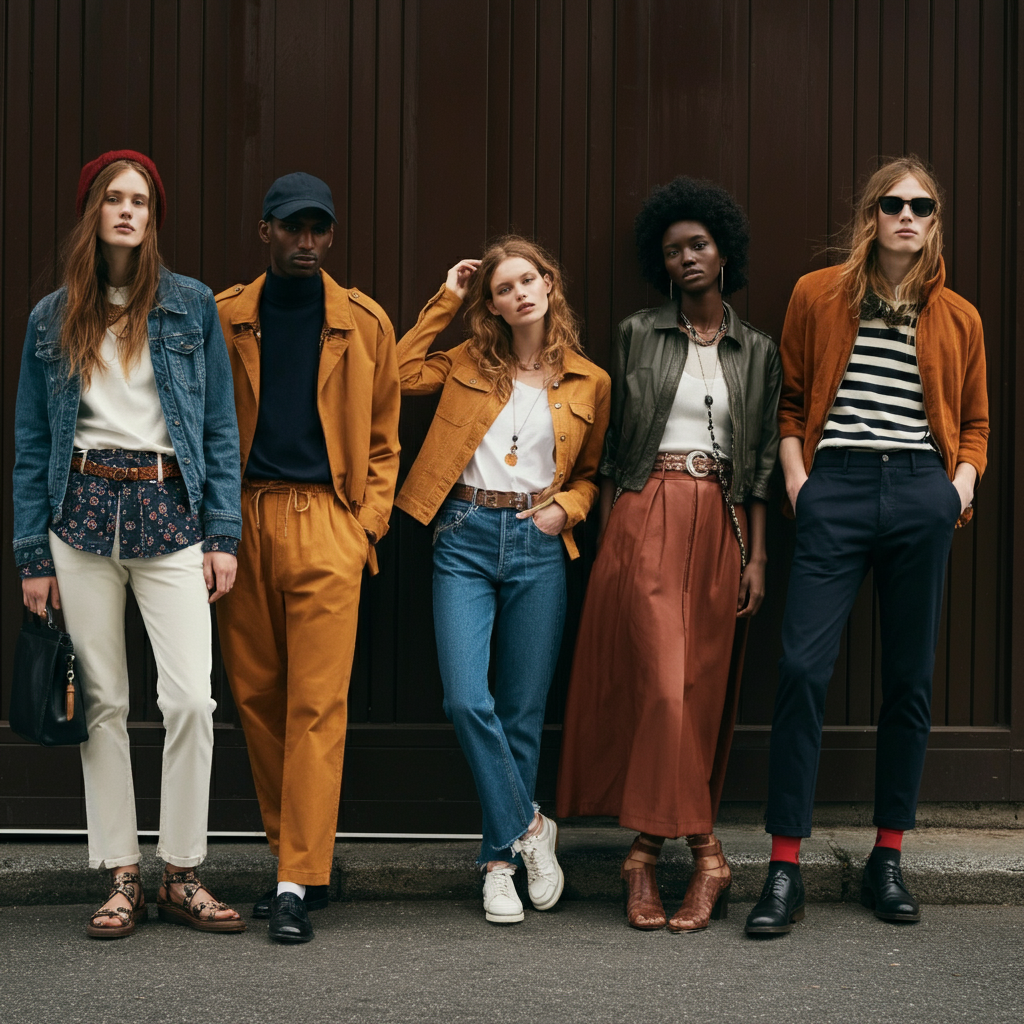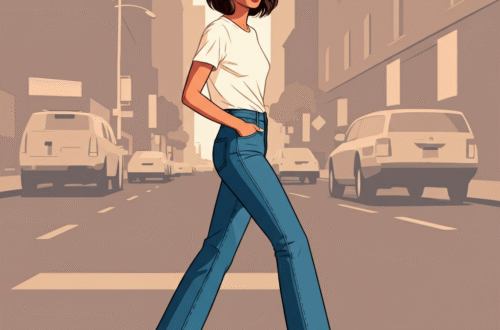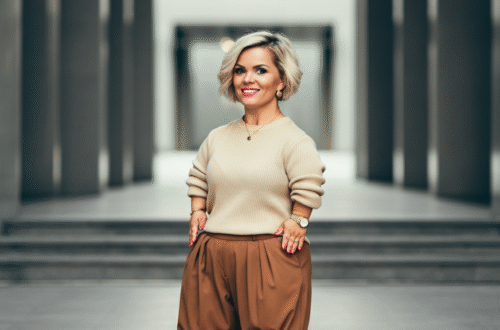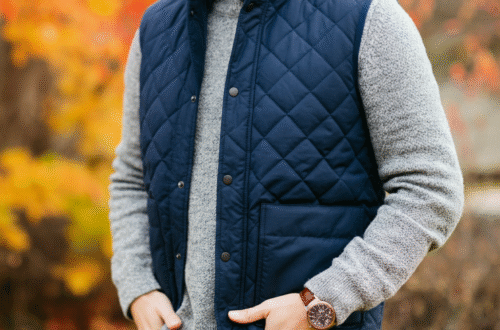Fashion is your personal story told through clothes, accessories, and style choices. Understanding different fashion styles helps you express your personality, boost confidence, and create a wardrobe that truly represents who you are. Whether you’re looking to refresh your current look or explore entirely new territory, this comprehensive guide will walk you through the most popular fashion styles and help you discover which ones resonate with your lifestyle and preferences.
Fashion styles aren’t just about following trends – they’re about finding what makes you feel comfortable, confident, and authentically you. From timeless classics to bold statements, there’s a style out there for everyone. Let’s explore the fascinating world of fashion and discover how different styles can transform not just your appearance, but your entire approach to self-expression.
Understanding Fashion Style Basics
Before diving into specific fashion styles, it’s important to understand what defines a particular style. Fashion styles are characterized by consistent elements like color palettes, silhouettes, fabric choices, and overall aesthetic approaches. Each style tells a different story and serves different purposes in our lives.
Your personal style is influenced by various factors including your lifestyle, career, body type, budget, and personal preferences. The beauty of fashion lies in its flexibility – you can adopt one style completely, mix elements from different styles, or create your own unique blend. There’s no right or wrong way to express yourself through fashion.
Many people find themselves drawn to multiple styles depending on the occasion, season, or their evolving tastes. This is perfectly normal and actually shows a sophisticated understanding of how fashion can serve different needs in our lives. The key is learning to identify what works for you and building a wardrobe that supports your goals and makes you feel amazing.
Classic and Timeless Fashion Styles
Traditional Classic Style
Classic style never goes out of fashion. This approach focuses on timeless pieces that look sophisticated year after year. Think crisp white shirts, well-tailored blazers, little black dresses, and quality trousers. The classic style emphasizes quality over quantity, investing in pieces that will last both in terms of construction and style relevance.
Key elements of classic style include neutral color palettes (black, white, navy, beige, gray), clean lines, and minimal embellishments. Classic dressers often choose pieces that can easily transition from day to night or from season to season. This style is perfect for professionals who want to look polished and put-together without spending too much time thinking about their outfits.
Accessories in classic style tend to be understated but high-quality. A classic wardrobe might include a good leather handbag, simple jewelry pieces, and comfortable yet elegant shoes. The goal is to create a refined appearance that commands respect and never looks out of place.
Preppy Fashion Style
Preppy style draws inspiration from traditional American collegiate and country club fashion. This look features clean, conservative pieces with a youthful twist. Think polo shirts, cable-knit sweaters, chinos, plaid patterns, and boat shoes. The preppy aesthetic suggests a privileged, educated background and maintains a fresh, wholesome appearance.
Colors in preppy fashion often include navy blue, white, pink, green, and classic plaids. Fabrics tend to be high-quality natural materials like cotton, wool, and cashmere. The overall effect is polished but approachable, suggesting someone who values tradition while maintaining a youthful energy.
Preppy style works well for both casual and business casual settings. It’s particularly popular among young professionals who want to look serious and capable while maintaining a friendly, approachable appearance. The style emphasizes fit and quality, creating looks that appear effortless but are actually quite thoughtfully constructed.
Bold and Statement Fashion Styles
Edgy and Alternative Style
Edgy fashion breaks conventional rules and makes bold statements. This style incorporates elements like leather jackets, ripped jeans, dark colors, metallic accents, and unconventional silhouettes. Edgy dressers aren’t afraid to stand out and often use fashion as a form of rebellion or self-expression.
The color palette for edgy style typically includes black, dark grays, deep reds, and metallics. Textures play a huge role, with leather, denim, mesh, and distressed materials being popular choices. Accessories might include chunky jewelry, studded details, bold makeup, and statement shoes like combat boots or platforms.
Edgy style can be adapted for different occasions. A softer version might include a leather jacket over a feminine dress, while a more intense version could feature all-black outfits with dramatic accessories. The key is maintaining that element of unexpected or unconventional choices that challenge traditional fashion norms.
Bohemian (Boho) Style
Bohemian style celebrates creativity, freedom, and individuality. This relaxed approach to fashion features flowing fabrics, earthy colors, mixed patterns, and artistic details. Boho style draws inspiration from various cultures and time periods, creating eclectic looks that feel both worldly and personal.
Typical boho pieces include maxi dresses, peasant blouses, wide-leg pants, fringe details, and layered jewelry. The color palette often features earth tones, jewel tones, and muted pastels. Natural fabrics like cotton, linen, and silk are preferred, along with handcrafted or vintage pieces that tell a story.
Accessories are crucial in bohemian style, with layered necklaces, stacked bracelets, floppy hats, and oversized bags being popular choices. The overall effect is effortlessly artistic, suggesting someone who values creativity and authenticity over conformity. Boho style works particularly well for creative professionals or those who enjoy expressing their artistic side through fashion.
Modern and Contemporary Styles
Minimalist Fashion Style
Minimalist style focuses on simplicity, quality, and functionality. This approach eliminates excess and concentrates on essential pieces that work together seamlessly. Think clean lines, neutral colors, and perfectly fitted basics that create a sophisticated, uncluttered appearance.
The minimalist wardrobe typically consists of high-quality basics in colors like black, white, gray, beige, and navy. Pieces are chosen for their versatility and ability to mix and match effortlessly. A minimalist might own fewer clothes overall but ensures each piece is carefully selected and well-made.
This style appeals to people who prefer a streamlined approach to getting dressed and value quality over quantity. Minimalist fashion often costs more upfront due to the focus on quality pieces, but it can save money long-term by reducing impulse purchases and creating a wardrobe that lasts. As noted by fashion experts at truefashionstory.comBlog, minimalist style has become increasingly popular among busy professionals who want to look polished without spending excessive time on outfit planning.
Streetwear Style
Streetwear originated from urban culture and has evolved into a major fashion movement. This style combines comfort with style, featuring casual pieces like sneakers, hoodies, graphic tees, and relaxed-fit pants. Streetwear often incorporates elements from sports, music, and street art cultures.
Brand recognition plays a significant role in streetwear, with certain labels and collaborations being highly sought after. Limited releases and exclusive drops create a culture of collecting and trading within the streetwear community. Colors and patterns can vary widely, from neutral basics to bold, eye-catching designs.
Streetwear has influenced high fashion, with luxury brands now creating their own streetwear-inspired pieces. This style appeals to younger demographics who value authenticity, comfort, and cultural relevance in their fashion choices. It’s particularly popular in urban environments where comfort and style need to coexist.
Feminine and Romantic Styles
Romantic Fashion Style
Romantic style embraces femininity through soft fabrics, flowing silhouettes, and delicate details. This approach to fashion celebrates traditionally feminine elements like lace, ruffles, floral prints, and pastel colors. The overall effect is dreamy, soft, and undeniably feminine.
Key pieces in romantic style include flowing dresses, blouses with feminine details, skirts in various lengths, and cardigans or light jackets. Fabrics tend to be soft and flowing, such as chiffon, silk, cotton voile, and lace. Colors often include pastels, soft neutrals, and muted tones that create a gentle, approachable appearance.
Accessories in romantic style complement the soft aesthetic with delicate jewelry, small handbags, and feminine shoes like ballet flats or low heels. Hair and makeup tend to be natural and soft, enhancing rather than overwhelming the overall romantic effect. This style works well for those who enjoy expressing their feminine side and prefer a gentler approach to fashion.
Vintage and Retro Styles
Vintage style draws inspiration from specific past decades, recreating or adapting looks from previous eras. Different decades offer distinct aesthetics – the 1950s brought full skirts and fitted tops, the 1960s introduced mod dresses and bold patterns, while the 1970s offered flowing fabrics and earthy colors.
True vintage pieces are original items from past decades, while vintage-inspired pieces are modern interpretations of classic styles. Both approaches can create authentic-looking vintage outfits. The key is understanding the silhouettes, colors, and details that defined each era you’re trying to emulate.
Vintage style appeals to those who appreciate fashion history and enjoy standing out with unique pieces. It can be more challenging to shop for vintage style since it requires finding authentic pieces or high-quality reproductions. However, the effort often results in truly distinctive outfits that showcase personal style and fashion knowledge.
Professional and Business Styles
Business Casual Style
Business casual bridges the gap between formal business attire and everyday casual wear. This style maintains a professional appearance while offering more comfort and personal expression than traditional business dress codes. It’s become the standard for many modern workplaces.
Typical business casual pieces include dress pants or chinos, collared shirts or blouses, sweaters, blazers, and closed-toe shoes. The key is looking polished and put-together while maintaining comfort for long workdays. Colors tend to be more varied than traditional business wear but still professional.
The challenge with business casual is that it can mean different things in different workplaces. It’s important to observe your specific work environment and understand what’s considered appropriate. Generally, business casual avoids items like jeans, sneakers, shorts, or overly casual t-shirts, while embracing slightly more relaxed versions of professional wear.
Power Dressing Style
Power dressing uses fashion to convey authority, confidence, and competence. This style often incorporates structured pieces, bold colors, and statement accessories to create a commanding presence. Power dressing isn’t just about looking professional – it’s about using fashion strategically to support career goals.
Key elements of power dressing include well-tailored suits, structured blazers, quality accessories, and confident color choices. Fit is crucial in power dressing, as ill-fitting clothes can undermine the authoritative effect you’re trying to achieve. Investment in tailoring is often worth the cost for this style.
Colors in power dressing can include classic neutrals for versatility, but also strategic use of bold colors to make memorable impressions. Red, for example, is often associated with power and confidence. The goal is creating outfits that help you feel confident and command respect in professional settings.
Seasonal and Occasion-Based Styles
Summer Fashion Styles
Summer fashion prioritizes comfort, breathability, and sun protection while maintaining style. Light fabrics, bright colors, and versatile pieces that can transition from day to evening are essential for warm weather dressing. The challenge is staying cool while still looking put-together.
Popular summer pieces include sundresses, shorts, light tops, sandals, and sun hats. Fabrics like cotton, linen, and lightweight synthetics help maintain comfort in heat. Colors often become brighter and more playful in summer, with white being particularly popular for its heat-reflecting properties.
Layering in summer focuses on light pieces that can be easily added or removed as temperatures change. A light cardigan or blazer can transform a casual day outfit into something suitable for air-conditioned evening venues. Sun protection through clothing choices becomes both practical and stylish.
Winter Fashion Styles
Winter fashion must balance warmth with style, creating looks that protect against cold while maintaining personal aesthetic preferences. Layering becomes crucial, allowing for temperature adjustments throughout the day while creating visually interesting outfits.
Key winter pieces include coats, sweaters, boots, scarves, and hats. The challenge is creating cohesive looks when bundled up in multiple layers. Strategic use of color and texture can help maintain style even when wearing heavy winter gear. Quality outerwear becomes an investment piece that affects every winter outfit.
Accessories play a larger role in winter fashion, with items like scarves, gloves, and hats becoming both functional and decorative. These pieces offer opportunities to add color, texture, and personality to outfits that might otherwise be dominated by heavy, practical clothing.
Fashion Style Comparison Table
|
Style Type |
Key Characteristics |
Color Palette |
Ideal For |
Investment Level |
|---|---|---|---|---|
|
Classic |
Timeless pieces, quality focus |
Neutrals, navy, black |
Professional settings |
High |
|
Minimalist |
Simple, functional, clean lines |
Black, white, gray, beige |
Busy lifestyles |
High |
|
Bohemian |
Flowing, artistic, eclectic |
Earth tones, jewel tones |
Creative environments |
Medium |
|
Edgy |
Bold, unconventional, statement-making |
Black, metallics, dark colors |
Self-expression |
Medium |
|
Preppy |
Clean, collegiate, traditional |
Navy, pink, green, plaids |
Young professionals |
Medium |
|
Romantic |
Soft, feminine, delicate details |
Pastels, soft neutrals |
Special occasions |
Low-Medium |
|
Streetwear |
Casual, urban, comfortable |
Varies widely |
Everyday wear |
Low-Medium |
Key Takeaways
Understanding different fashion styles helps you make intentional choices about your appearance and self-expression. Here are the most important points to remember:
- Personal style is personal – Don’t feel pressured to fit perfectly into one category. Mix and match elements that speak to you.
- Quality matters more than quantity – Invest in well-made pieces that will last and make you feel confident.
- Consider your lifestyle – Choose styles that work with your daily activities, career requirements, and social environments.
- Fit is everything – Even the most expensive clothes won’t look good if they don’t fit properly.
- Start with basics – Build your wardrobe around versatile pieces that can be styled multiple ways.
- Express yourself authentically – Fashion should enhance who you are, not hide your true self.
- Budget wisely – You don’t need to spend a fortune to look good, but strategic investments in key pieces pay off.
Frequently Asked Questions
Q: Can I mix different fashion styles together?
A: Absolutely! Most people naturally gravitate toward elements from multiple styles. The key is finding a balance that feels authentic to you. Start by identifying which aspects of different styles appeal to you and experiment with combining them in ways that work for your lifestyle.
Q: How do I know which fashion style suits my body type?
A: Any fashion style can work for any body type with the right fit and proportions. Focus on finding cuts and silhouettes within your preferred style that flatter your body shape. Don’t let body type limitations prevent you from exploring styles you love – instead, learn how to adapt them to work for you.
Q: Is it expensive to maintain a specific fashion style?
A: The cost varies significantly depending on the style and how you approach building your wardrobe. Classic and minimalist styles often require higher upfront investments but save money long-term. Trendy styles might cost less initially but require more frequent updates. Set a budget and prioritize versatile pieces that align with your chosen style.
Q: How often should I update my wardrobe to stay current with fashion trends?
A: This depends on your personal style and preferences. Classic and minimalist styles require minimal updates, while trend-focused styles need more frequent refreshing. A good approach is to maintain a foundation of timeless pieces while incorporating trend elements through accessories and less expensive items.
Q: What if I work in a conservative environment but want to express my personal style?
A: Look for subtle ways to incorporate your preferred style within dress code requirements. This might mean adding interesting accessories, choosing unique colors within acceptable ranges, or finding professional pieces with interesting details. Small touches can make a big difference in personal expression.
Q: How do I transition between different fashion styles for different occasions?
A: Build a versatile wardrobe with pieces that can be styled multiple ways. A blazer might work for business casual during the day and edge up a casual outfit for evening. Learn which pieces from your wardrobe can serve multiple style purposes and invest in versatile items.
Building Your Personal Style Journey
Discovering and developing your personal style is an ongoing journey, not a destination. Different fashion styles serve different purposes in our lives, and your preferences may evolve as you grow and change. The most important thing is to stay true to yourself while remaining open to new possibilities.
Start by identifying which styles from this guide resonated with you. Consider your lifestyle needs, budget constraints, and personal preferences. Don’t rush to completely overhaul your wardrobe – instead, gradually incorporate elements of your preferred styles while building on pieces you already own and love.
Remember that fashion should enhance your life, not complicate it. Choose styles that make you feel confident, comfortable, and authentically yourself. With patience and experimentation, you’ll develop a personal style that truly reflects who you are and supports your goals in all areas of life.





